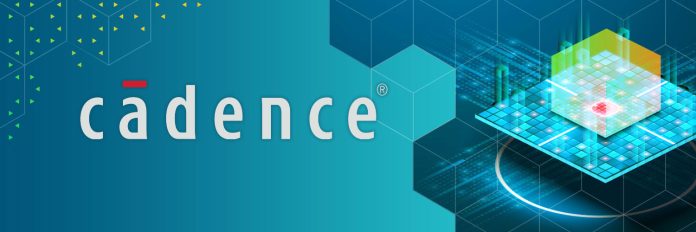Cadence Design Systems is a tech-savvy organisation building the most intricate and in-demand electronic system designs, actively developing critical components in segments of IC design, verification, Digital design and signoff, Multiphysics analysis, PCB design, molecular simulation etc., and engineering marvels at the helm of technologies like AI, 3D-IC, mixed-signal, photonics, computational fluid dynamics etc. Also as an industry giant, the team caters to areas like 5G systems and subsystems, aerospace and defense, automotive, hyperscale computing, and life sciences.

Rashi Bajpai, Sub-Editor at ELE Times spoke with Ms Madhavi Rao, Field Marketing Group Director EMEAI at Cadence Design Systems on the various technologies Cadence is currently working on and their expertise in the field.
This is an excerpt from the conversation.
ELE Times: Brief us on Cadence’s Intelligent System Design strategy and the road ahead.
Madhavi Rao: Electronics is pervasive in every aspect of life and business, from consumer applications to automotive to cloud computing, and everything in between. As a result, the need for seamless integration, top performance, low power, small form factor, thermal considerations, and advanced features – to name a few – have become crucial.
To address these complexities, semiconductor and systems companies require comprehensive solutions encompass chips, IP, PCB & packaging, and system design solutions. Cadence has addressed this change in dynamics through its Intelligent System Design strategy, which includes the following key elements:
Design Excellence: Cadence offers an optimized EDA toolkit comprising tools and IP for semiconductor, package, and PCB design, with scalable distributed computing capabilities in the cloud. This allows customers to solve a broad range of large complex challenges.
System Innovation: Expanding beyond EDA to facilitate early software development and to optimize the entire system for various critical factors such as security, responsiveness, power efficiency, electromagnetics, thermal performance, Multiphysics considerations, and more.
Pervasive intelligence: To enable the creation of sophisticated systems, machine learning (ML) technologies have been incorporated into design tools and in workflows.
ELE Times: Cadence Design Systems is well-renowned in the electronics industry for its consumer-centric software used in designing chips and electronic systems. What in your opinion are the latest and upcoming trends that will drive the market of chip designing and the overall semiconductor industry in India?
Madhavi Rao: Over the years, semiconductor companies in India have played a crucial role in providing design services and contributing to research and development efforts for global companies. In the last few years, recognizing the strategic importance of semiconductor manufacturing and design for the country’s economic growth and technological advancement, there has been a greater push from the Government of India to make India self-reliant in electronics, and a semiconductor hub for the world. The government initiatives to attract investment and promote indigenous semiconductor development have created a positive atmosphere for the growth of the semiconductor industry.
Focus on Domestic Manufacturing and Investment in Fab Facilities
Countries the world over, including India, have been focusing on regional self-sufficiency in semiconductor manufacturing.
Indian policymakers and industry stakeholders have expedited their efforts to establish India as a hub for semiconductor manufacturing and supply chains, with various incentives and schemes. Of late we have seen a significant amount of investment from global players to set up fab facilities in India. These fab facilities are expected to catalyze the growth and development of the Indian semiconductor industry, driving innovation, creating jobs, enhancing supply chain resilience, and positioning India as a competitive player in the global semiconductor landscape.
Collaborations are critical in developing the local manufacturing ecosystem. Several international semiconductor companies are investing in India’s semiconductor ecosystem through collaborations, which provide expertise, technology transfer, and investment capital, fuelling the growth of the semiconductor industry in India.
Leveraging the opportunity of the huge domestic market
India’s consumer electronics market is growing exponentially, thanks to factors such as urbanization, increasing disposable income, and government initiatives such as Digital India and Make in India. This growth has led to a significant increase in demand for semiconductor chips. In addition, there are a multitude of opportunities for “designing for India” – creating electronic products that cater to India’s unique needs. This presents a huge opportunity for local entrepreneurs to innovate.
Design and Innovation Ecosystem
Globally, India is recognized as a chip design powerhouse. According to IESA, 20% of the world’s chip designers work out of India. Initiatives like the India Semiconductor Mission strengthen the design and innovation ecosystem, which will be crucial for developing more intellectual property (IP) and design startups in India.
ELE Times: How is Cadence addressing the requirements of 3D-IC design in several areas of implementation, and further help us understand the role of 3D IC technology in strengthening the semiconductor ecosystem in India?
Madhavi Rao: 3D-IC (Three-Dimensional Integrated Circuit) is a technology where multiple layers of integrated circuits (ICs) are stacked on top of each other rather than placed on a single silicon wafer. Compared to traditional two-dimensional ICs, this vertical stacking optimises space utilisation, enhances performance, and improves functionality.
Cadence has a 3D-IC solution that provides 3D design planning, implementation, and system analysis in a single, unified cockpit. It enables hardware and software co-verification and full-system power analysis using emulation and prototyping and chiplet-based PHY IP for connectivity with power, performance, and area (PPA) optimized for latency, bandwidth, and power. The solution also offers co-design capabilities with custom analog design and board design, integrated circuit (IC) signoff extraction, static timing analysis (STA) and signoff with signal and power integrity (SI/PI), electromagnetic interference (EMI), and thermal analysis.
Similar to the evolution of commercial third-party IP, which led to the development of a thriving market for soft and hard IP, the 3D-IC chiplet landscape offers significant opportunities for growth and the emergence of a market for commercial third-party chiplets. This evolution is expected to unfold over the coming years, requiring the definition and enforcement of standards to facilitate seamless integration. This could present a unique opportunity for India to take the lead.
ELE Times: In light of your recent collaboration with MeitY to provide EDA tools for free to companies looking to set up their chip design centres in India under the DLI scheme, how involved is Cadence in promoting the start-up ecosystem in India in the electronics and technology sector?
Madhavi Rao: For more than 20 years, Cadence has been closely involved in workforce development. From the establishment of the government’s Specialized Manpower Development Program (SMDP) Phases I and II, we have been actively taking part in the program. Currently we are working with MeitY for the Chips to Startup Program, aimed at training engineers in VLSI design.
Cadence is proud to be working closely with MeitY to realize the ambition of developing a pool of 85,000 trained engineers by 2027.
Over 350 academic institutions are enrolled in the The Cadence Academic Network, where students have access to Cadence’s world-class technology. In addition, Cadence has been actively engaged with various training institutes that are involved with upskilling, reskilling, and acquiring lateral skills to meet the industry’s demands.
Cadence has been working together with startups to nurture the semiconductor industry’s growth in India by empowering them with access to cutting-edge tools, technologies, and expertise since 2006.
Specific engagements of Cadence’s in promoting startups in India consist of:
- Providing tailored business models for startups.
- Cadence has partnered with startup incubators like FABCi – IIT Hyderabad and Electropreneur Park in Delhi and Bhubaneswar to provide software, guidance, and mentorship to semiconductor and electronics startups.
- Cadence also has strong ties with academic institutions across India, fostering a culture of innovation. Startups benefit from this ecosystem through collaborations on research projects, access to talent, and opportunities for academia-industry partnerships.
Through events, conferences, and customer forums, Cadence facilitates networking opportunities for startups.
ELE Times: With over 30% of its workforce in India, Cadence handles major R&D projects and product development from India. Shed some light on your global R&D goals and how India is helping global operations for Cadence.
Madhavi Rao: Cadence is one of the early MNCs to enter India. We have had a presence in India for over 35 years, with a workforce across Noida, Bengaluru, Ahmedabad, Hyderabad and Pune. 30% of our global employees are based in India.
Cadence offers end-to-end tools for chip and system design, including IP and hardware. Our R&D teams in India collaborate with R&D teams across the world on our product portfolios in digital design and signoff, functional verification, formal verification, hardware and prototyping, IP, custom and mixed-signal design, PCB and IC Packaging design and System design.
ELE Times: Give some insights into Cadence’s Millennium M1 platform, its key features, benefits, and applications.
Madhavi Rao: Designing mechanical systems for new levels of performance and efficiency has become a key priority in the automotive, aerospace and defense (A&D), energy, and turbomachinery industries. To optimize performance and reduce greenhouse gases, automotive designers are focused on improving fuel efficiency, reducing drag and noise, and extending electric vehicle range. Increasing efficiency, reducing carbon emissions and reducing maintenance frequency are top of mind for A&D and turbomachinery design engineers. Advances in multiphysics simulation technology are critical to achieving these goals. Cadence Millennium Platform addresses these needs.
Cadence Millennium Enterprise Multiphysics Platform is the industry’s first hardware/software accelerated digital twin solution for multiphysics system design and analysis. Targeted at one of the biggest opportunities for greater performance and efficiency, the first-generation Cadence Millennium M1 accelerates high-fidelity computational fluid dynamics (CFD) simulations. This turnkey solution includes graphics processing units (GPUs) from leading providers, extremely fast interconnections and an enhanced Cadence high-fidelity CFD software stack optimized for GPU acceleration and generative AI. Millennium M1 instances can be fused into a unified cluster, enabling customers to achieve an unprecedented same-day turnaround time and near-linear scalability when simulating complex mechanical systems.
Key highlights and benefits include:
- Performance: Combines best-in-class GPU-resident CFD solvers with dedicated GPU hardware to provide supercomputer-equivalent throughput per GPU of up to 1000 CPU cores
- Efficiency: Reduces turnaround time from weeks to hours with 20X better energy efficiency compared to its CPU equivalent
- Accuracy: Leverages Cadence Fidelity™ CFD solvers to provide unmatched accuracy to address complex simulation challenges
- High-Performance Computing: Built with an extensible architecture and massively scalable Fidelity solvers to provide near-linear scalability on multiple GPU nodes
- AI Digital Twin: Rapid generation of high-quality multiphysics data enables generative AI to create fast and reliable digital twin visualizations of the optimal system design solution
- Turnkey Solution: The industry’s first solution that couples GPU compute with modern and scalable CFD solvers, providing an optimized environment for accelerated CFD and multidisciplinary design and optimization
- Flexibility: Available with GPUs from leading vendors, in the cloud with minimum 8 GPU configurations, or on-premises with a minimum 32 GPU configurations—providing a flexible and scalable solution to fit each customer’s deployment needs.








